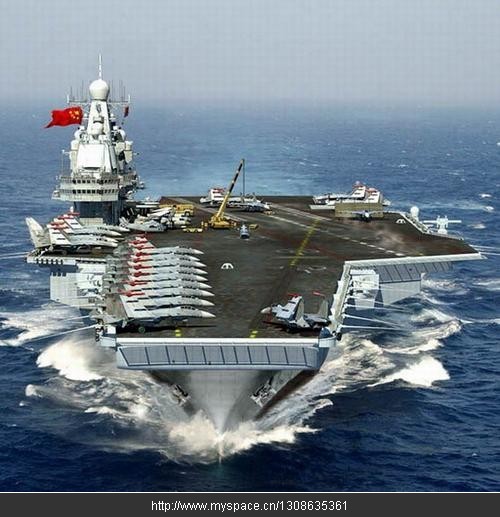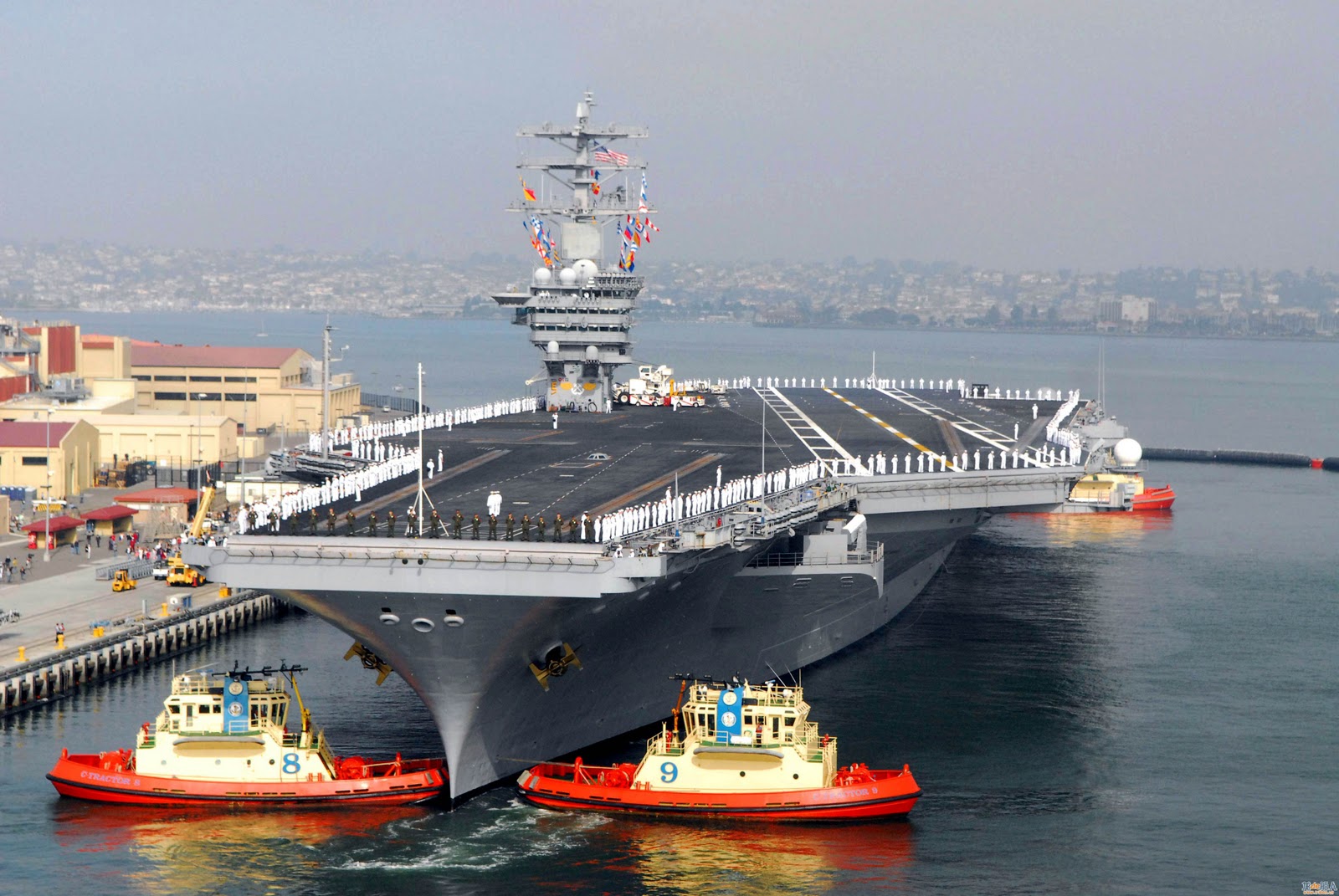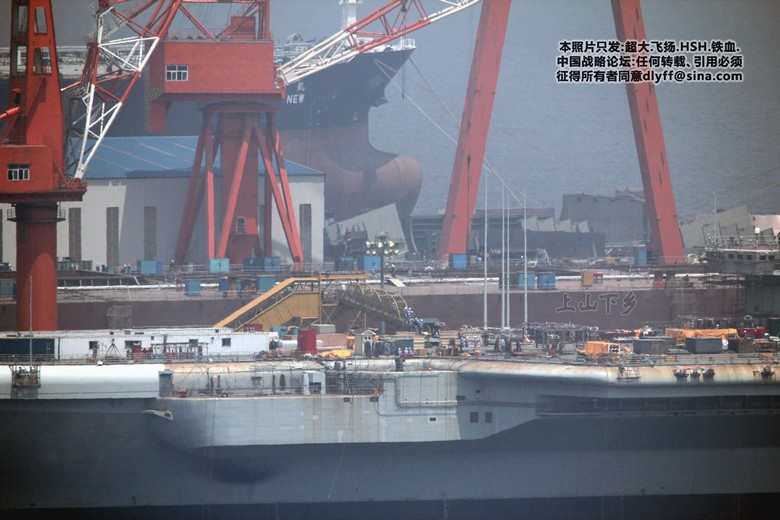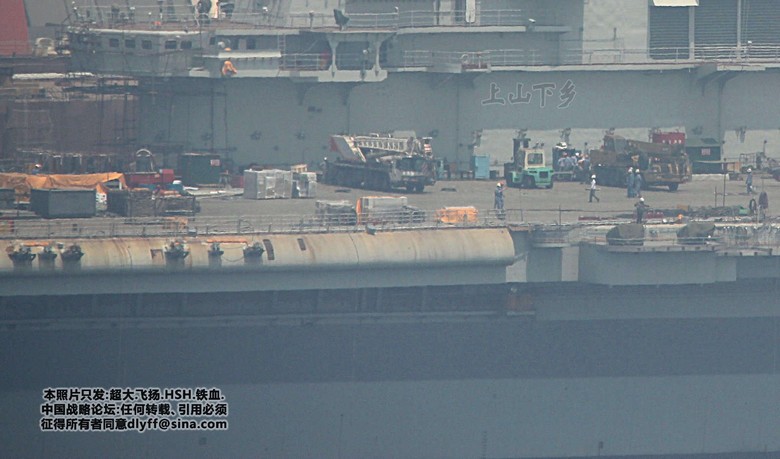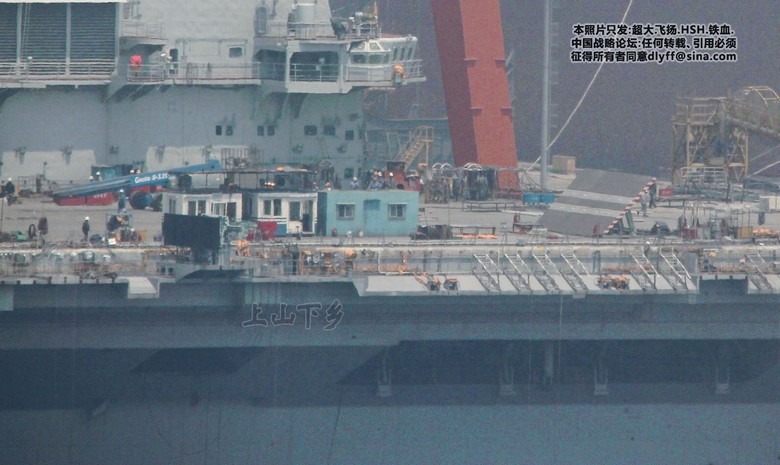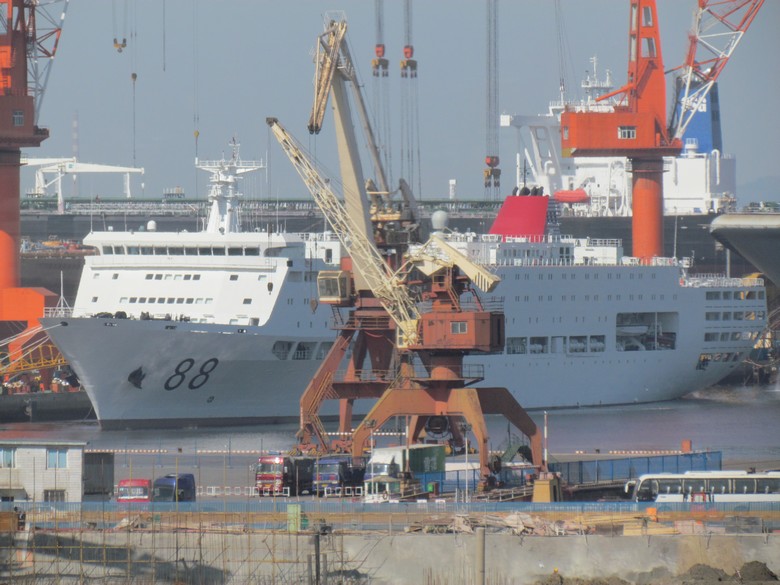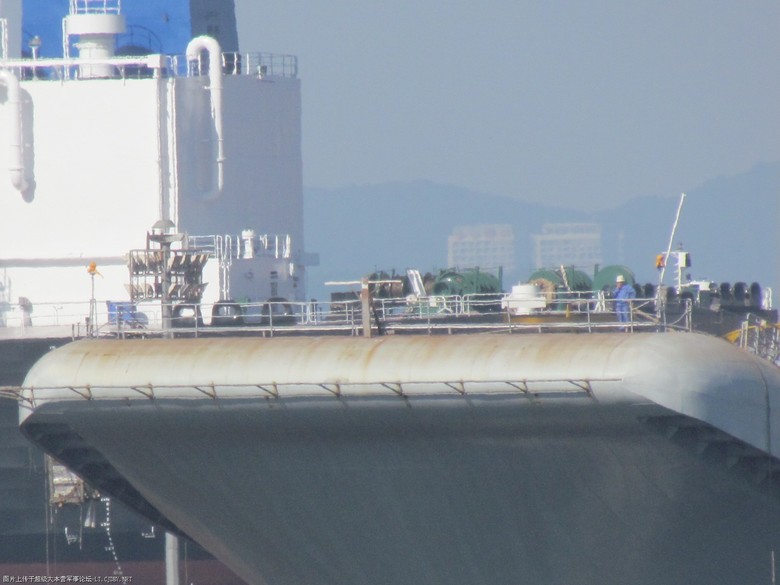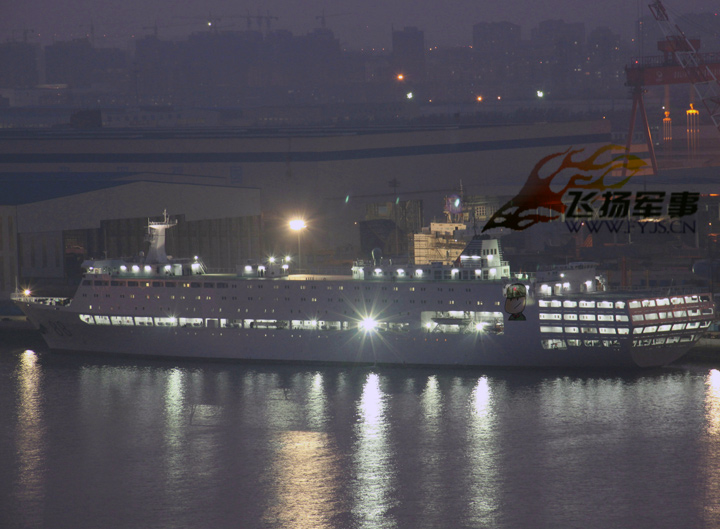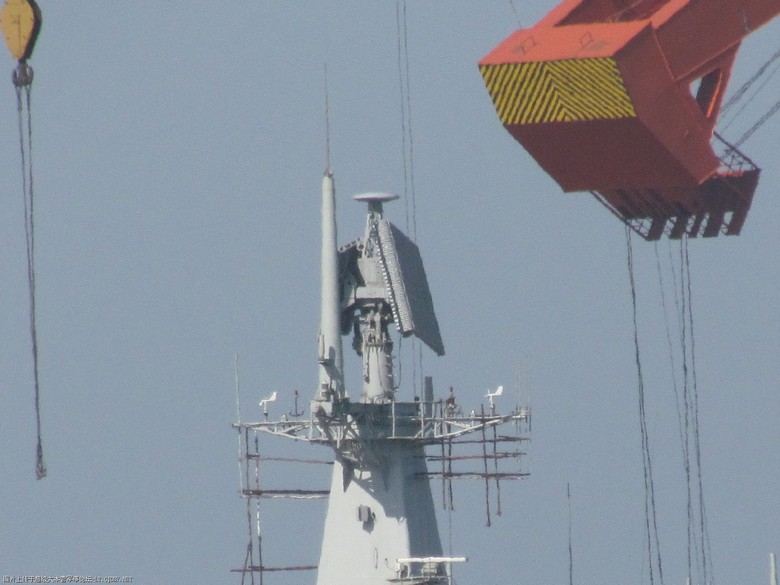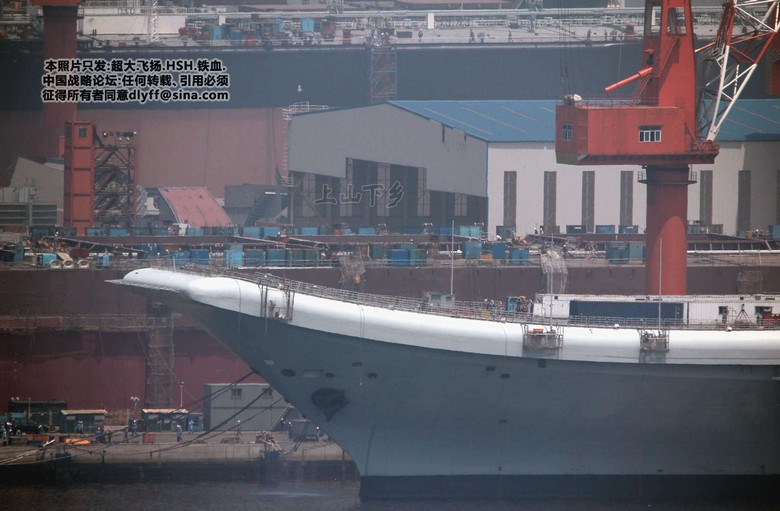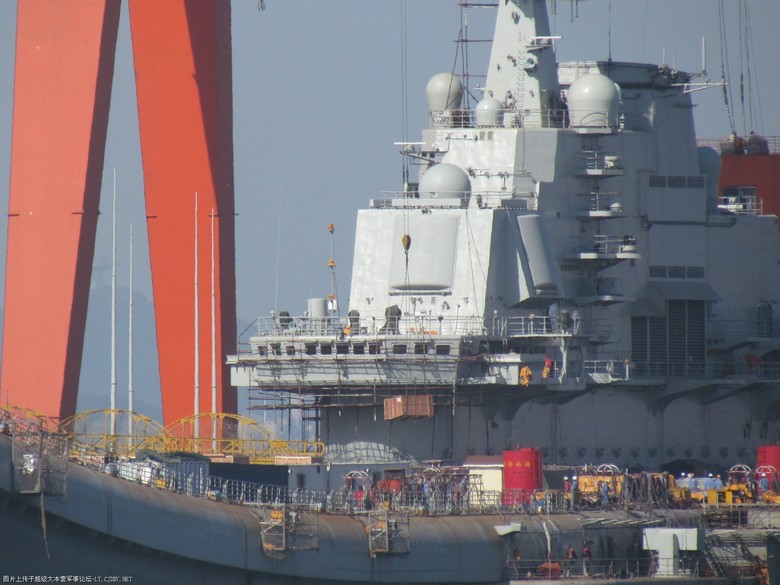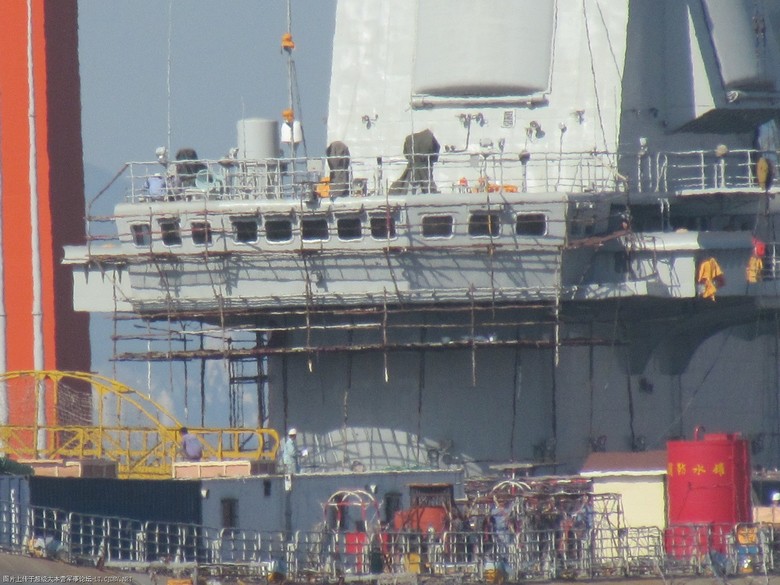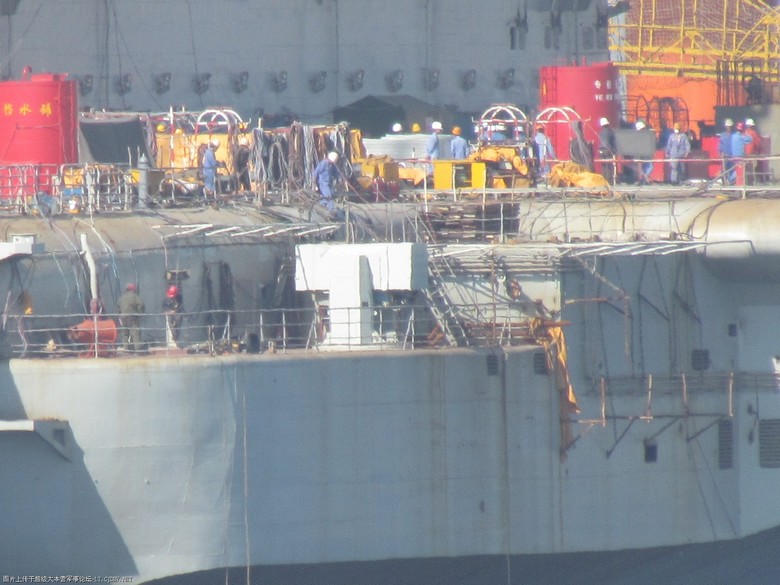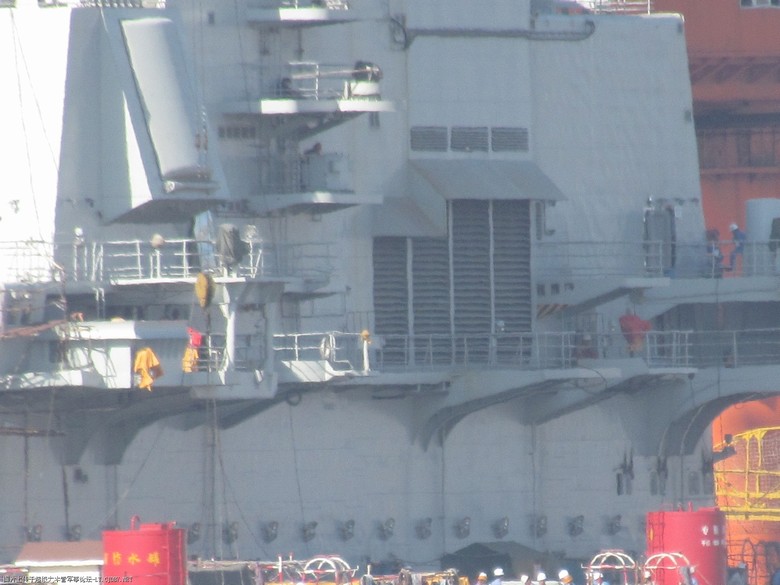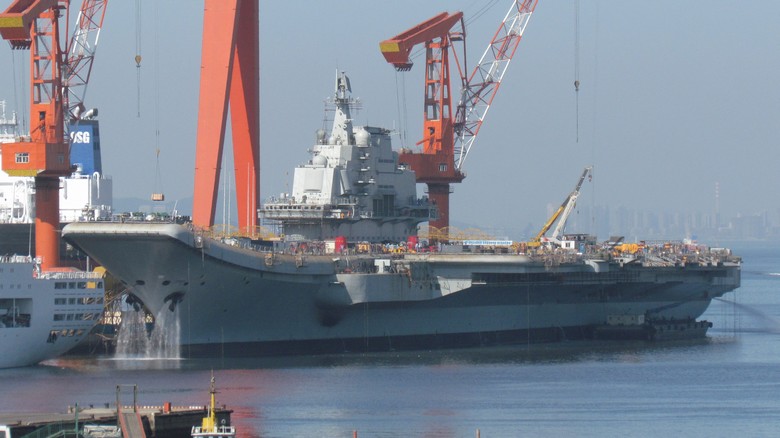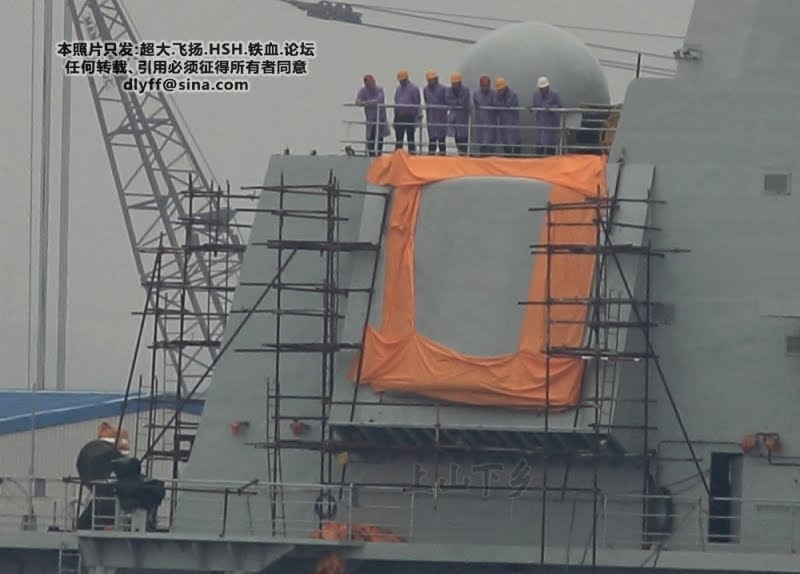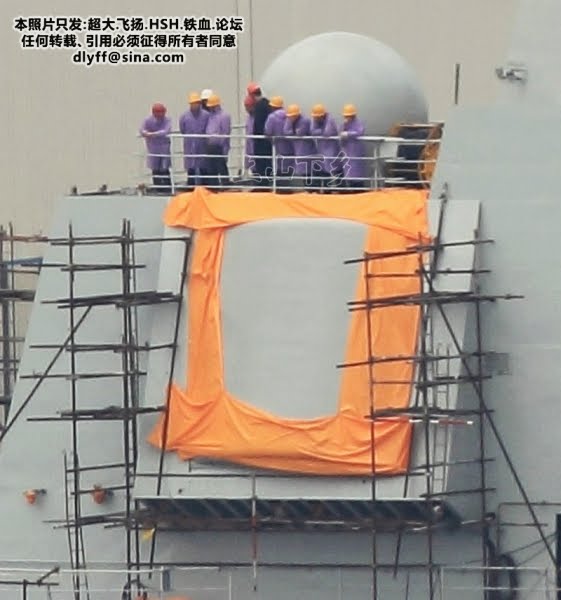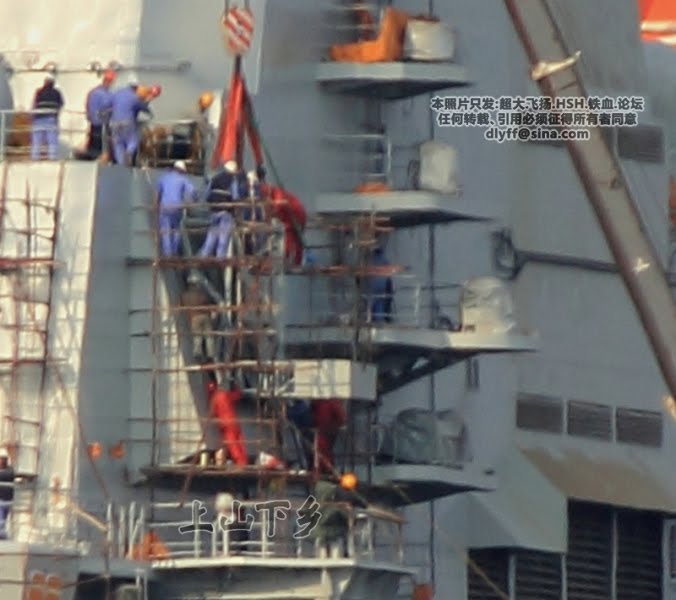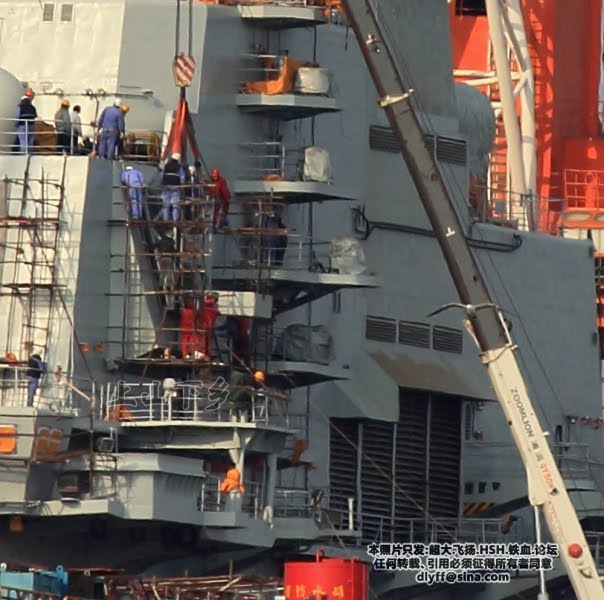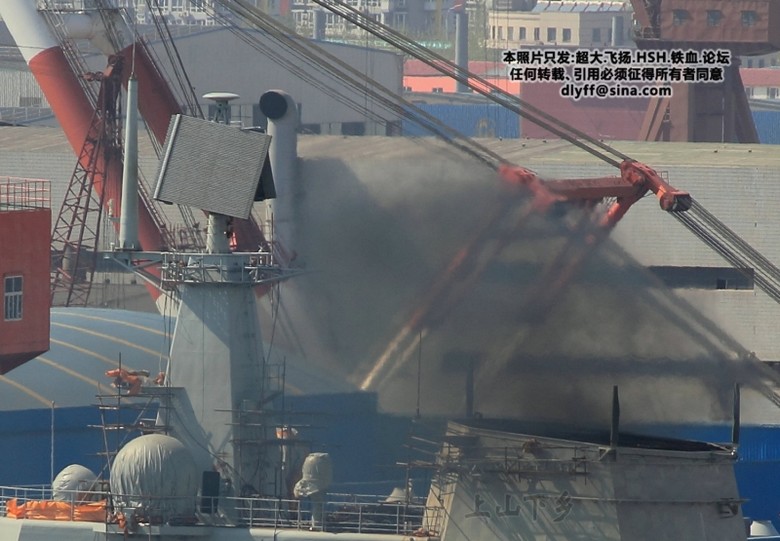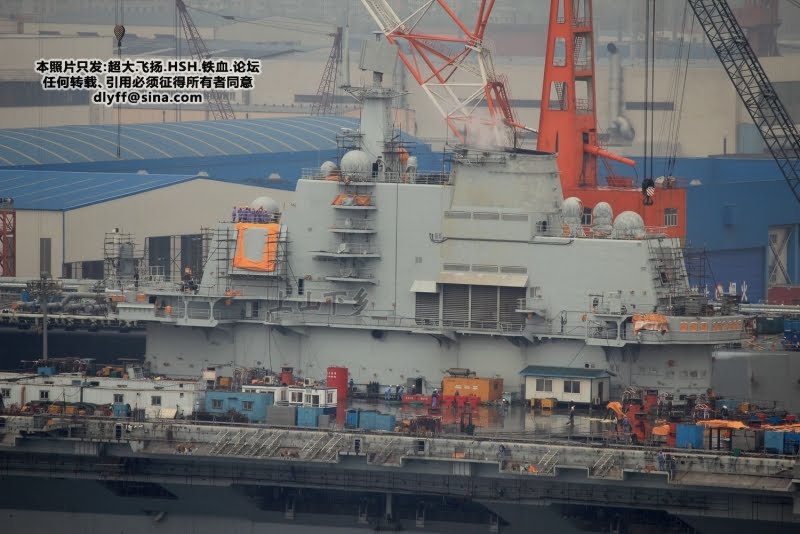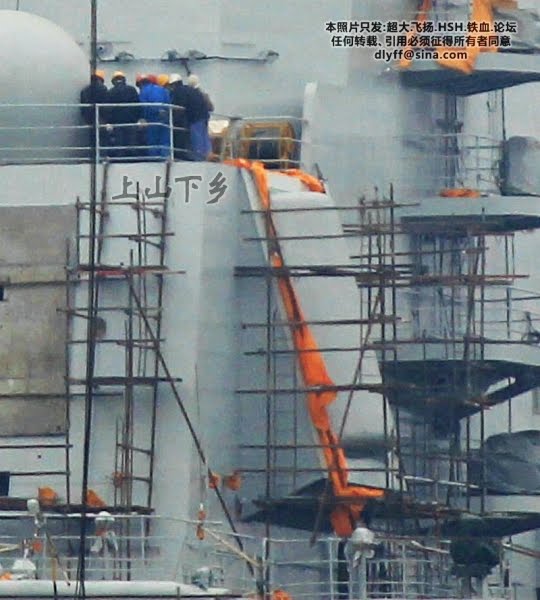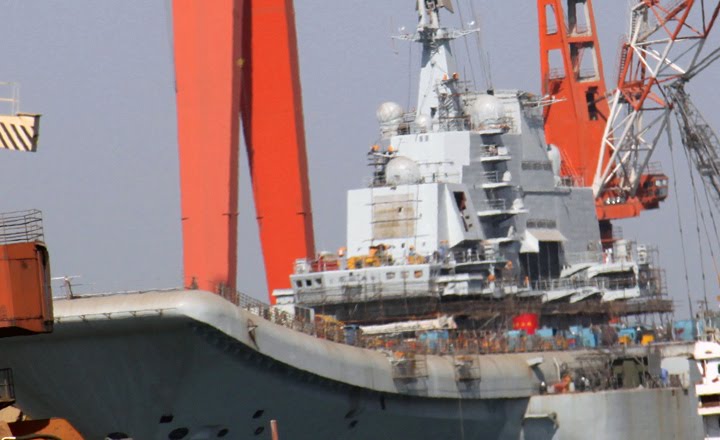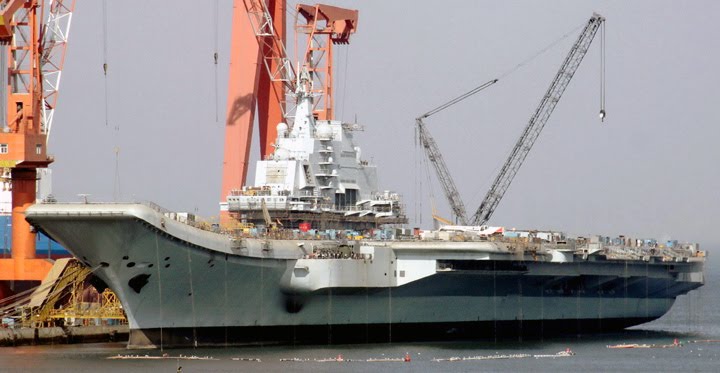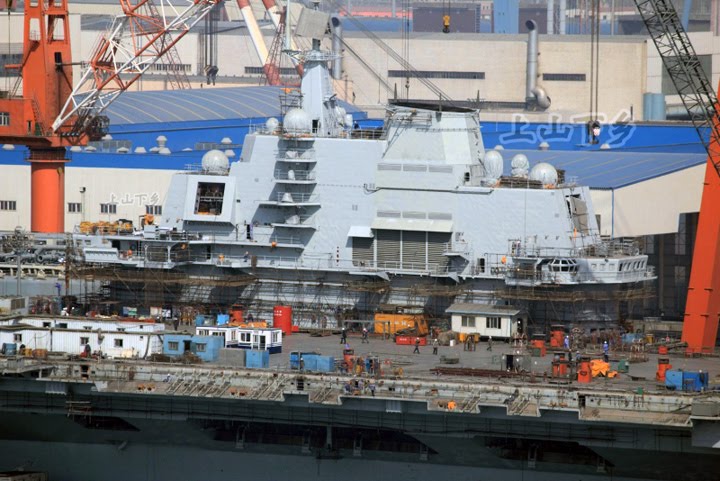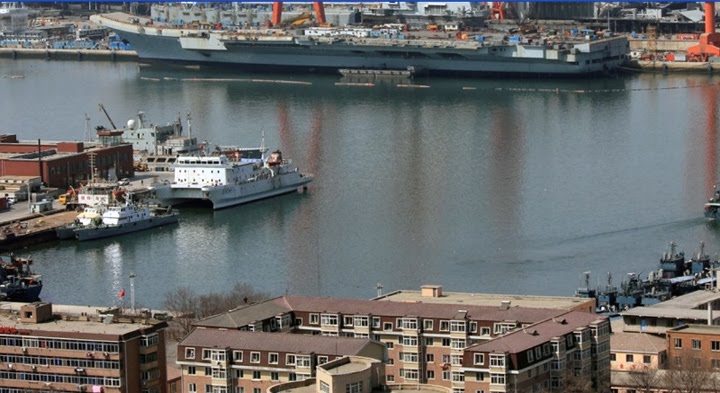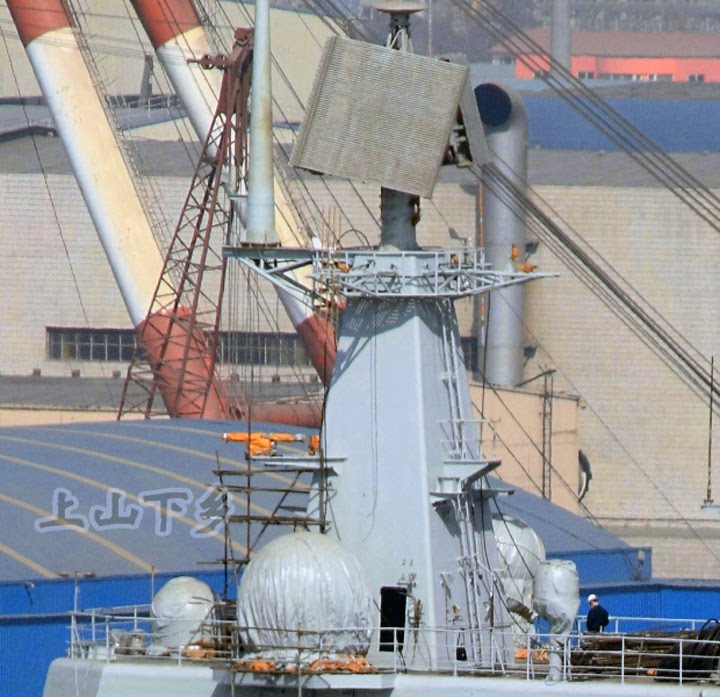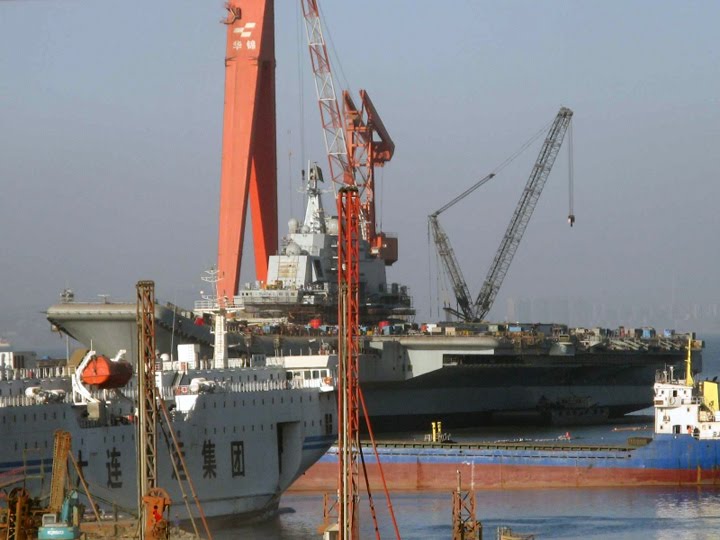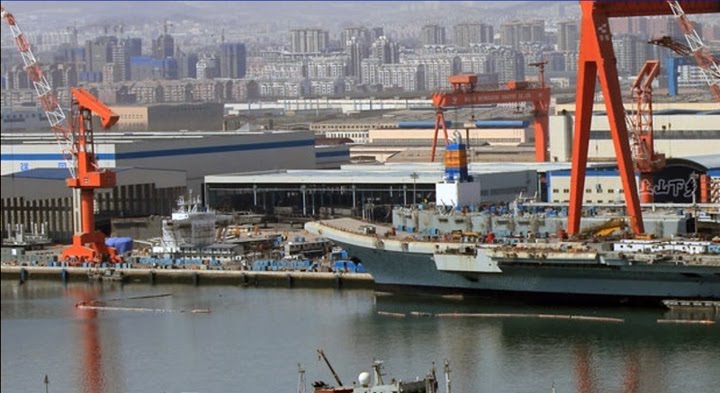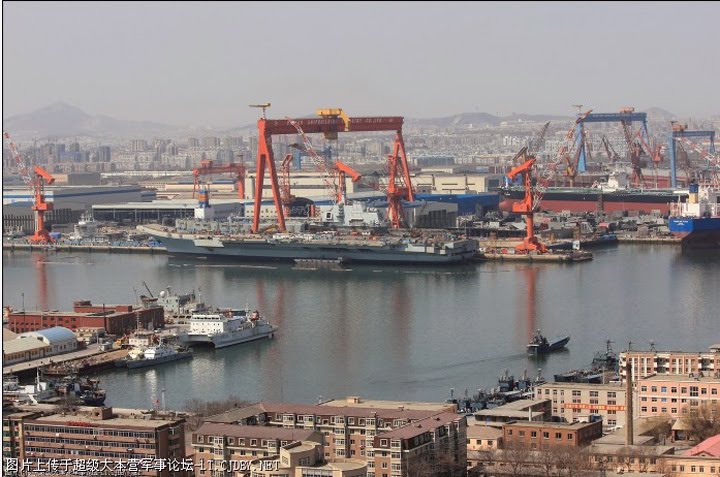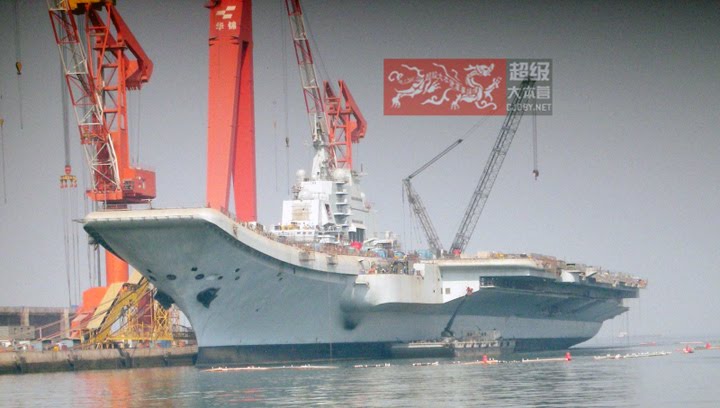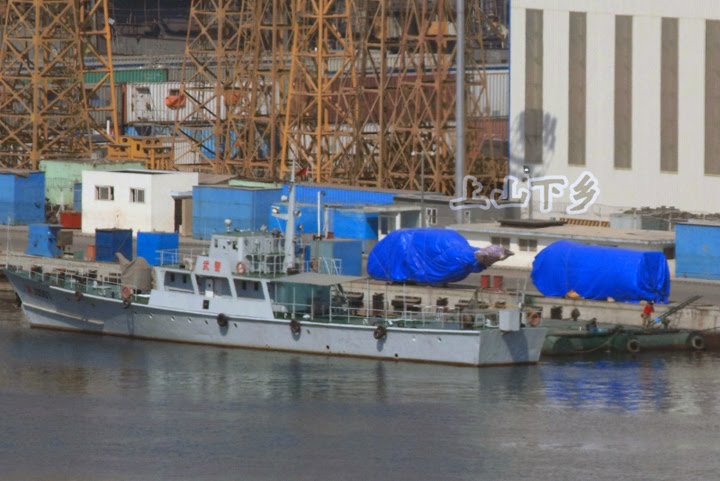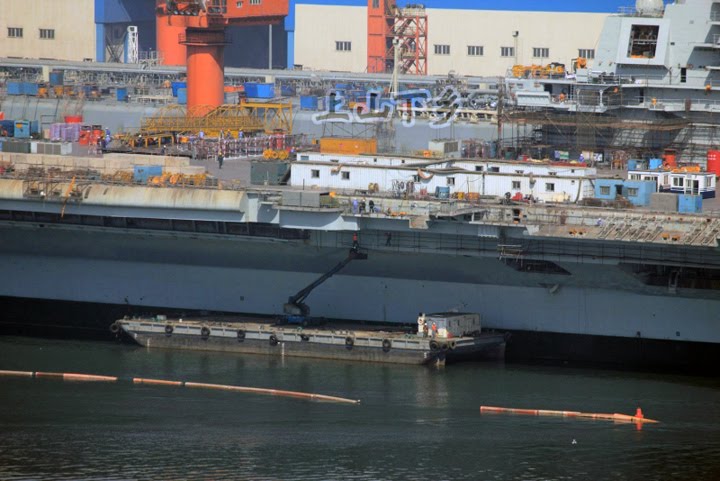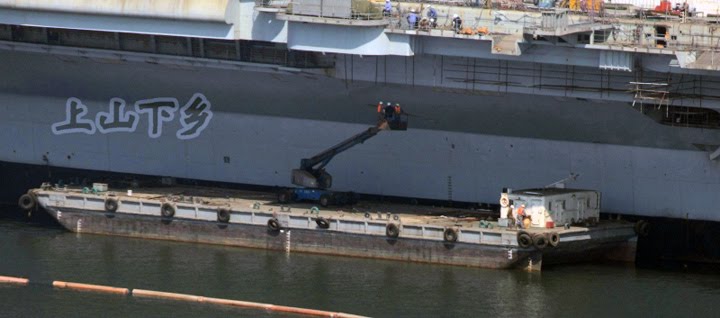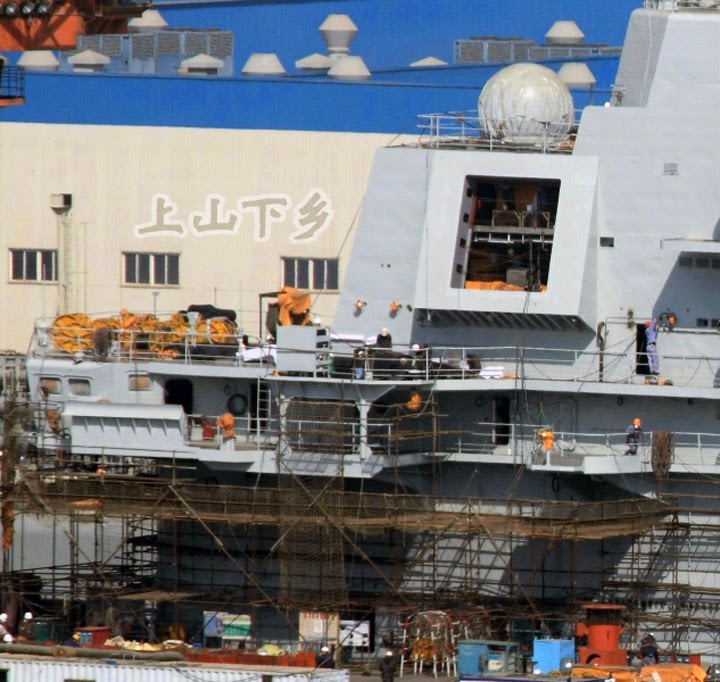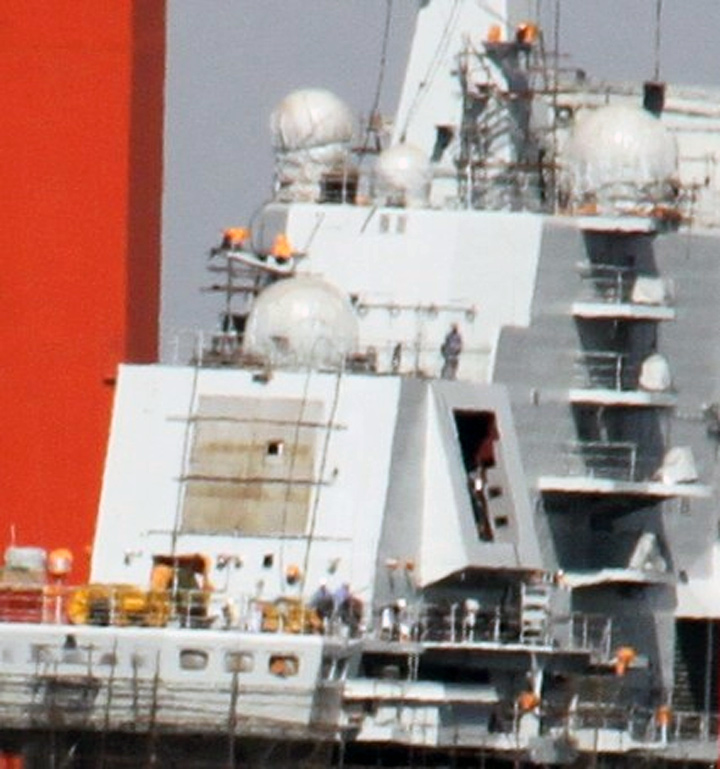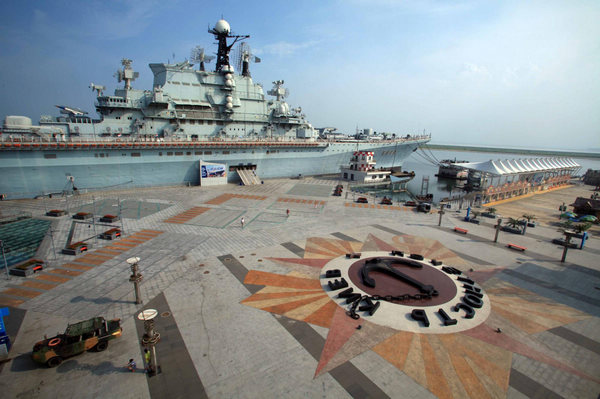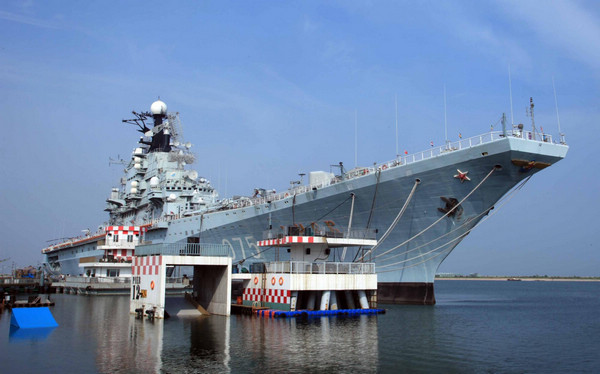China’s first aircraft carrier starts sea trial

hina's first aircraft carrier has begun its inaugural sea trial, the defence ministry said Wednesday, a move likely to stoke concerns about the nation's rapid military expansion.
Beijing only recently confirmed it was revamping an old Soviet ship to be its first carrier, adding to worries among its neighbors over the country's military build-up and growing assertiveness on territorial issues.
"According to trial plans, the first sea trial will not take long," the defence ministry said in a statement.
"After returning to the shipyard (in the port city of Dalian), the carrier will continue its refit and test work."
Beijing last month sought to play down the capability of its first carrier, saying the vessel would be used for training and "research".
Chen Bingde, the nation's top military official, only provided the first official acknowledgment of the aircraft carrier in a Hong Kong newspaper interview in early June.
But media reports and military analysts have said for years that the 300-metre (990-foot) ship was in development.
The ship, once called the Varyag, was originally built for the Soviet navy. Construction was interrupted by the collapse of the Soviet Union in 1991.
Andrei Chang, head of the Kanwa Information Centre, which monitors China's military, told AFP the trial would likely only last about an hour.
"The first sea trial is just for testing different items, like whether the engines work or not," he said, adding that from Soviet and French aircraft carrier experience, on-off sea trials would continue for another year or two.
Last week Japan voiced concern over China's growing assertiveness and widening naval reach and over what it called the "opaqueness" of Beijing's military budget.
The carrier project also comes amid heightened tensions over a number of maritime territorial disputes involving China, notably in the South China Sea, which is believed to be rich in oil and gas and is claimed by several countries.
The issue has heated up recently with run-ins between China and fellow claimants Vietnam and the Philippines, sparking concern among its neighbouring countries and the United States.
In September, a row erupted between Japan and China over the disputed Senkaku Islands, known as the Diaoyu Islands in Chinese, located in the East China Sea.
China reportedly bought the ship's immense armoured hull -- with no engine, electrics or propeller -- in 1998.
Chang pointed out that he had not seen any form of arresting gear on the carrier -- the mechanical system that rapidly decelerates a plane as it lands -- in photos he had seen so far.
"That's very strange. It's very complicated technology and the Chinese haven't installed it -- we couldn't find it," he said.
"That means they can't land any fighters, probably only helicopters."
China's People's Liberation Army -- the largest armed force in the world -- is extremely secretive about its defence programmes, which benefit from a huge and expanding military budget boosted by the nation's runaway economic growth.
The PLA also operates the country's navy
http://www.defencetalk.com/china-first-aircraft-carrier-varyag-starts-sea-trial-36268/
بدء إختبارات البحر لحاملة الطائرات الصينيه فارياج
الترجمه من روسيا اليوم
نقلت وكالة "شينخوا" للأنباء عن مصدر عسكري صيني قوله أن أول حاملة طائرات صينية بدات رحلة تجريبية بحرية. وأكدت الوكالة نقلا عن المصدر أن حاملة الطائرات غادرت حوض بناء السفن في ميناء داليان في إقليم لياونينيغ صباح الأربعاء 10 أغسطس/ اب، وان أول تجربة تأتي متماشية مع الجدول الزمني المقرر.
يذكر أن حاملة الطائرات الصينية الجديدة، هي بالاصل سفينة حربية سوفيتية الصنع كانت تعرف باسم "فارياغ". وذكرت الوكالة أن برنامج ترميم السفينة الحربية وإختباراتها ستتواصل بعد عودتها من التجربة، من دون الكشف عن المزيد من التفاصيل.
وكانت السفينة الحربية قد بوشر ببنائها في ثمانينات من القرن الماضي لصالح الاتحاد السوفيتي السابق لكنها لم تكتمل أبدا. وعندما إنهار الاتحاد السوفيتي عام 1991، بقى هيكل السفينة قابعا في حوض لبناء السفن في أوكرانيا.
واشترت الصين السفينة "فارياغ" في العام 1998 في أوكرانيا بغية تطوير السفينة لتصبح حاملة الطائرات الصينية الأولى. ثم نشرت على شبكة الإنترنت صور حاملة الطائرات الصينية الأولى التي تم تجهيزها بأنظمة دفاع جوي ورادارات ومحرك أوكراني وبمعدات أخرى. وأشير إلى أنه أطلق عليها اسم الأميرال شي لان الذي فرض سيطرة الصين على جزيرة تايوان في العام 1681.
ومن المرجح أن تثير هذه الخطوة مخاوف بشأن الوتيرة المتسارعة للتسلح الصيني
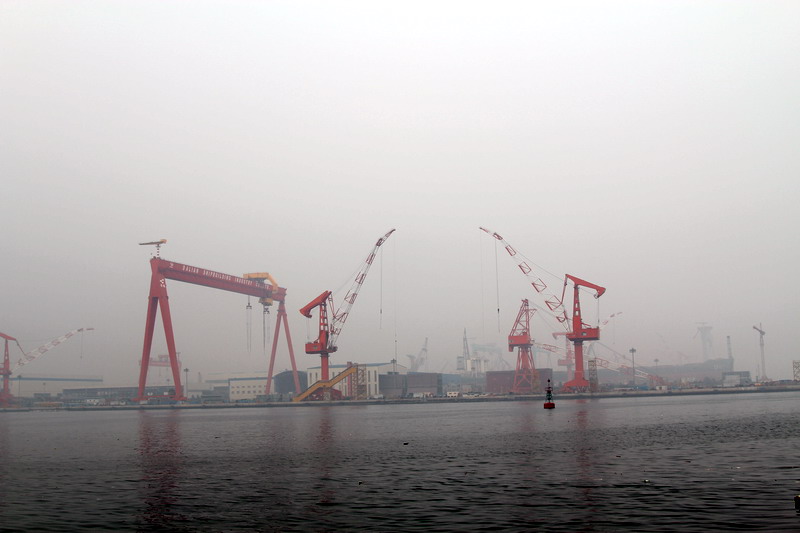
U.S. Asks China to Explain Need for Carrier
WASHINGTON - The United States said Aug. 10 it would like China to explain why it needs an aircraft carrier amid broader U.S. concerns about Beijing's lack of transparency over its military aims.
"We would welcome any kind of explanation that China would like to give for needing this kind of equipment," State Department spokeswoman Victoria Nuland told reporters when asked whether the carrier would raise regional tensions.
"This is part of our larger concern that China is not as transparent as other countries. It's not as transparent as the United States about its military acquisitions, about its military budget," she said.
"And we'd like to have the kind of open, transparent relationship in military-to-military affairs," Nuland said.
"In our military-to-military relations with many countries around the world, we have the kind of bilateral dialogue where we can get quite specific about the equipment that we have and its intended purposes and its intended movements," she said.
But China and the United States are "not at that level of transparency" to which the two nations aspire, Nuland added.
The comments came hours after China's first aircraft carrier embarked on its inaugural sea trial, a move likely to stoke concerns about the nation's military expansion and growing territorial assertiveness.
Beijing only recently confirmed it was revamping an old Soviet ship to be its first carrier and has sought to play down the vessel's capability, saying it will mainly be used for training and "research."
http://www.defensenews.com/story.php?i=7357523&c=ASI&s=SEA
الولايات المتحده تطلب توضيحات من الصين عن مدى حاجتها لحاملات الطائرات
وتأمل ان تجواب الصين بشفافيه لعلمها مدى التعتيم الصينى على المشاريع العسكريه
وهذا بعد ساعات من بدء إختبارات البحر لأول حامله صينيه
Taiwan's 'Carrier Killer' Aims To Sink China's Carrier
TAIPEI - In the event of war, Taiwan plans to sink China's new aircraft carrier, the Varyag, with its new "aircraft carrier killer" missile, the ramjet-powered supersonic anti-ship cruise missile Hsiung Feng 3. The revelation was made Aug. 10 on the same day China launched the Varyag for its first sea trials.

The disclosure came during a preshow media tour of the biennial Taipei Aerospace and Defense Technology Exhibition (TADTE). Journalists inspecting the Hsiung Feng 3 were shocked to see a large mural of the Varyag being attacked by three Hsiung Feng 3 missiles. Two of the missiles impact the carrier's starboard bow and starboard quarter, with a third missile is en route to the ship.
The mural was reminiscent of similar displays at the 2010 Zhuhai Airshow in China, where anti-ship missiles were depicted attacking and sinking U.S. aircraft carriers.
The unveiling of the display comes at an uncomfortable time for Taiwan President Ma Ying-jeou. Since coming into office in 2008, Ma has eased cross-Strait tensions and signed historic economic agreements with China.
Military officials denied that calling Hsiung Feng 3 the "aircraft carrier killer" or displaying a mural of a missile attack on the Varyag were intended to send Beijing a political message. In the past, the Taiwan military often used ambiguous phrases to describe the "enemy" without mentioning China. Therefore, the Hsiung Feng 3 display was out of synch with normal military protocol that avoids enraging China.
The military-run Chungshun Institute of Science and Technology (CSIST) produces the Hsiung Feng family of anti-ship missiles, including the Tien Kung (Sky Bow) air defense missile and the Tien Chien (Sky Sword) missile.
CSIST is working on a highly classified missile system called the Hsiung Feng 2E, which is reportedly a land-attack cruise missile capable of hitting targets on mainland China. This missile has never been displayed to the public and the military refuses to discuss its existence. Another missile program considered secret is the Tien Chien 2A, which is reportedly an anti-radiation missile designed to destroy ground-based radar systems.
A CSIST official said the Hsiung Feng 3 has been outfitted on the 1101 and 1103 Perry-class frigates for testing. "We began building the Hsiung Feng III around five years ago."
The military might field the missile inland along the coast to fend off a Chinese invasion armada, he said. The Hsiung Feng 3 has a reported range of 130 kilometers.
Also on display at TADTE was the new Tien Kung 3 (Sky Bow) air defense missile. The Tien Kung is based on the U.S.-built Patriot missile defense system. Details of its probable deployment are classified
http://www.defensenews.com/story.php?i=7356595&c=AME&s=TOP
تايوان تعلن عن صاروخها القاتل لحاملات الطائرات
وهو صاروخ كروز مضاد للسفن أسرع من الصوت ومحركه يعمل بتقنية ramjet
ويسما Hsiung Feng 3

وتم الإعلان عن هذا الصاروخ اليوم العاشر من أغسطس وهو نفس اليوم الذى بدئت فيه إختبارات البحر للحامله الصينيه فارياج
والمفأجأه عند عرضه وجد الصحافيين لوحه جداريه مرسوم عليها الحامله الصينيه وهى تغرق بعد إصابتها بثلاث صواريخ من هذا الطراز

واعلنت تايوان أن هذا الصاروخ تم بدء العمل فى مشروعه منذ خمس سنوات
ويصل مداه إلى 130كم
وتم تسليح فرقطات بيرى لإختباره
من ناحيه أخرى أعلنت الصين حظر للطيران لمدة خمسة أيام فى منطقة الإختبارات
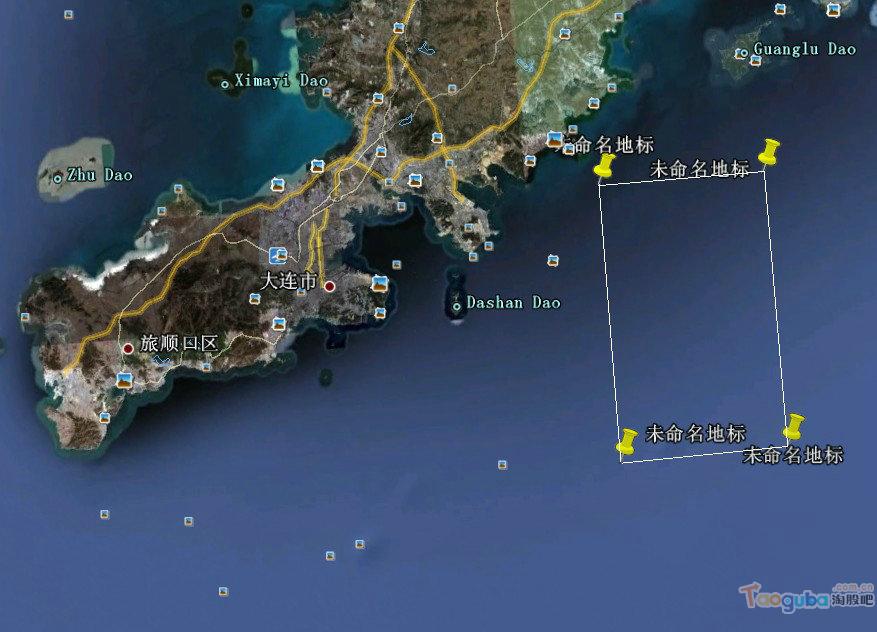

hina's first aircraft carrier has begun its inaugural sea trial, the defence ministry said Wednesday, a move likely to stoke concerns about the nation's rapid military expansion.
Beijing only recently confirmed it was revamping an old Soviet ship to be its first carrier, adding to worries among its neighbors over the country's military build-up and growing assertiveness on territorial issues.
"According to trial plans, the first sea trial will not take long," the defence ministry said in a statement.
"After returning to the shipyard (in the port city of Dalian), the carrier will continue its refit and test work."
Beijing last month sought to play down the capability of its first carrier, saying the vessel would be used for training and "research".
Chen Bingde, the nation's top military official, only provided the first official acknowledgment of the aircraft carrier in a Hong Kong newspaper interview in early June.
But media reports and military analysts have said for years that the 300-metre (990-foot) ship was in development.
The ship, once called the Varyag, was originally built for the Soviet navy. Construction was interrupted by the collapse of the Soviet Union in 1991.
Andrei Chang, head of the Kanwa Information Centre, which monitors China's military, told AFP the trial would likely only last about an hour.
"The first sea trial is just for testing different items, like whether the engines work or not," he said, adding that from Soviet and French aircraft carrier experience, on-off sea trials would continue for another year or two.
Last week Japan voiced concern over China's growing assertiveness and widening naval reach and over what it called the "opaqueness" of Beijing's military budget.
The carrier project also comes amid heightened tensions over a number of maritime territorial disputes involving China, notably in the South China Sea, which is believed to be rich in oil and gas and is claimed by several countries.
The issue has heated up recently with run-ins between China and fellow claimants Vietnam and the Philippines, sparking concern among its neighbouring countries and the United States.
In September, a row erupted between Japan and China over the disputed Senkaku Islands, known as the Diaoyu Islands in Chinese, located in the East China Sea.
China reportedly bought the ship's immense armoured hull -- with no engine, electrics or propeller -- in 1998.
Chang pointed out that he had not seen any form of arresting gear on the carrier -- the mechanical system that rapidly decelerates a plane as it lands -- in photos he had seen so far.
"That's very strange. It's very complicated technology and the Chinese haven't installed it -- we couldn't find it," he said.
"That means they can't land any fighters, probably only helicopters."
China's People's Liberation Army -- the largest armed force in the world -- is extremely secretive about its defence programmes, which benefit from a huge and expanding military budget boosted by the nation's runaway economic growth.
The PLA also operates the country's navy
http://www.defencetalk.com/china-first-aircraft-carrier-varyag-starts-sea-trial-36268/
بدء إختبارات البحر لحاملة الطائرات الصينيه فارياج
الترجمه من روسيا اليوم
نقلت وكالة "شينخوا" للأنباء عن مصدر عسكري صيني قوله أن أول حاملة طائرات صينية بدات رحلة تجريبية بحرية. وأكدت الوكالة نقلا عن المصدر أن حاملة الطائرات غادرت حوض بناء السفن في ميناء داليان في إقليم لياونينيغ صباح الأربعاء 10 أغسطس/ اب، وان أول تجربة تأتي متماشية مع الجدول الزمني المقرر.
يذكر أن حاملة الطائرات الصينية الجديدة، هي بالاصل سفينة حربية سوفيتية الصنع كانت تعرف باسم "فارياغ". وذكرت الوكالة أن برنامج ترميم السفينة الحربية وإختباراتها ستتواصل بعد عودتها من التجربة، من دون الكشف عن المزيد من التفاصيل.
وكانت السفينة الحربية قد بوشر ببنائها في ثمانينات من القرن الماضي لصالح الاتحاد السوفيتي السابق لكنها لم تكتمل أبدا. وعندما إنهار الاتحاد السوفيتي عام 1991، بقى هيكل السفينة قابعا في حوض لبناء السفن في أوكرانيا.
واشترت الصين السفينة "فارياغ" في العام 1998 في أوكرانيا بغية تطوير السفينة لتصبح حاملة الطائرات الصينية الأولى. ثم نشرت على شبكة الإنترنت صور حاملة الطائرات الصينية الأولى التي تم تجهيزها بأنظمة دفاع جوي ورادارات ومحرك أوكراني وبمعدات أخرى. وأشير إلى أنه أطلق عليها اسم الأميرال شي لان الذي فرض سيطرة الصين على جزيرة تايوان في العام 1681.
ومن المرجح أن تثير هذه الخطوة مخاوف بشأن الوتيرة المتسارعة للتسلح الصيني

U.S. Asks China to Explain Need for Carrier
WASHINGTON - The United States said Aug. 10 it would like China to explain why it needs an aircraft carrier amid broader U.S. concerns about Beijing's lack of transparency over its military aims.
"We would welcome any kind of explanation that China would like to give for needing this kind of equipment," State Department spokeswoman Victoria Nuland told reporters when asked whether the carrier would raise regional tensions.
"This is part of our larger concern that China is not as transparent as other countries. It's not as transparent as the United States about its military acquisitions, about its military budget," she said.
"And we'd like to have the kind of open, transparent relationship in military-to-military affairs," Nuland said.
"In our military-to-military relations with many countries around the world, we have the kind of bilateral dialogue where we can get quite specific about the equipment that we have and its intended purposes and its intended movements," she said.
But China and the United States are "not at that level of transparency" to which the two nations aspire, Nuland added.
The comments came hours after China's first aircraft carrier embarked on its inaugural sea trial, a move likely to stoke concerns about the nation's military expansion and growing territorial assertiveness.
Beijing only recently confirmed it was revamping an old Soviet ship to be its first carrier and has sought to play down the vessel's capability, saying it will mainly be used for training and "research."
http://www.defensenews.com/story.php?i=7357523&c=ASI&s=SEA
الولايات المتحده تطلب توضيحات من الصين عن مدى حاجتها لحاملات الطائرات
وتأمل ان تجواب الصين بشفافيه لعلمها مدى التعتيم الصينى على المشاريع العسكريه
وهذا بعد ساعات من بدء إختبارات البحر لأول حامله صينيه
Taiwan's 'Carrier Killer' Aims To Sink China's Carrier
TAIPEI - In the event of war, Taiwan plans to sink China's new aircraft carrier, the Varyag, with its new "aircraft carrier killer" missile, the ramjet-powered supersonic anti-ship cruise missile Hsiung Feng 3. The revelation was made Aug. 10 on the same day China launched the Varyag for its first sea trials.
The disclosure came during a preshow media tour of the biennial Taipei Aerospace and Defense Technology Exhibition (TADTE). Journalists inspecting the Hsiung Feng 3 were shocked to see a large mural of the Varyag being attacked by three Hsiung Feng 3 missiles. Two of the missiles impact the carrier's starboard bow and starboard quarter, with a third missile is en route to the ship.
The mural was reminiscent of similar displays at the 2010 Zhuhai Airshow in China, where anti-ship missiles were depicted attacking and sinking U.S. aircraft carriers.
The unveiling of the display comes at an uncomfortable time for Taiwan President Ma Ying-jeou. Since coming into office in 2008, Ma has eased cross-Strait tensions and signed historic economic agreements with China.
Military officials denied that calling Hsiung Feng 3 the "aircraft carrier killer" or displaying a mural of a missile attack on the Varyag were intended to send Beijing a political message. In the past, the Taiwan military often used ambiguous phrases to describe the "enemy" without mentioning China. Therefore, the Hsiung Feng 3 display was out of synch with normal military protocol that avoids enraging China.
The military-run Chungshun Institute of Science and Technology (CSIST) produces the Hsiung Feng family of anti-ship missiles, including the Tien Kung (Sky Bow) air defense missile and the Tien Chien (Sky Sword) missile.
CSIST is working on a highly classified missile system called the Hsiung Feng 2E, which is reportedly a land-attack cruise missile capable of hitting targets on mainland China. This missile has never been displayed to the public and the military refuses to discuss its existence. Another missile program considered secret is the Tien Chien 2A, which is reportedly an anti-radiation missile designed to destroy ground-based radar systems.
A CSIST official said the Hsiung Feng 3 has been outfitted on the 1101 and 1103 Perry-class frigates for testing. "We began building the Hsiung Feng III around five years ago."
The military might field the missile inland along the coast to fend off a Chinese invasion armada, he said. The Hsiung Feng 3 has a reported range of 130 kilometers.
Also on display at TADTE was the new Tien Kung 3 (Sky Bow) air defense missile. The Tien Kung is based on the U.S.-built Patriot missile defense system. Details of its probable deployment are classified
http://www.defensenews.com/story.php?i=7356595&c=AME&s=TOP
تايوان تعلن عن صاروخها القاتل لحاملات الطائرات
وهو صاروخ كروز مضاد للسفن أسرع من الصوت ومحركه يعمل بتقنية ramjet
ويسما Hsiung Feng 3

وتم الإعلان عن هذا الصاروخ اليوم العاشر من أغسطس وهو نفس اليوم الذى بدئت فيه إختبارات البحر للحامله الصينيه فارياج
والمفأجأه عند عرضه وجد الصحافيين لوحه جداريه مرسوم عليها الحامله الصينيه وهى تغرق بعد إصابتها بثلاث صواريخ من هذا الطراز
واعلنت تايوان أن هذا الصاروخ تم بدء العمل فى مشروعه منذ خمس سنوات
ويصل مداه إلى 130كم
وتم تسليح فرقطات بيرى لإختباره
من ناحيه أخرى أعلنت الصين حظر للطيران لمدة خمسة أيام فى منطقة الإختبارات


